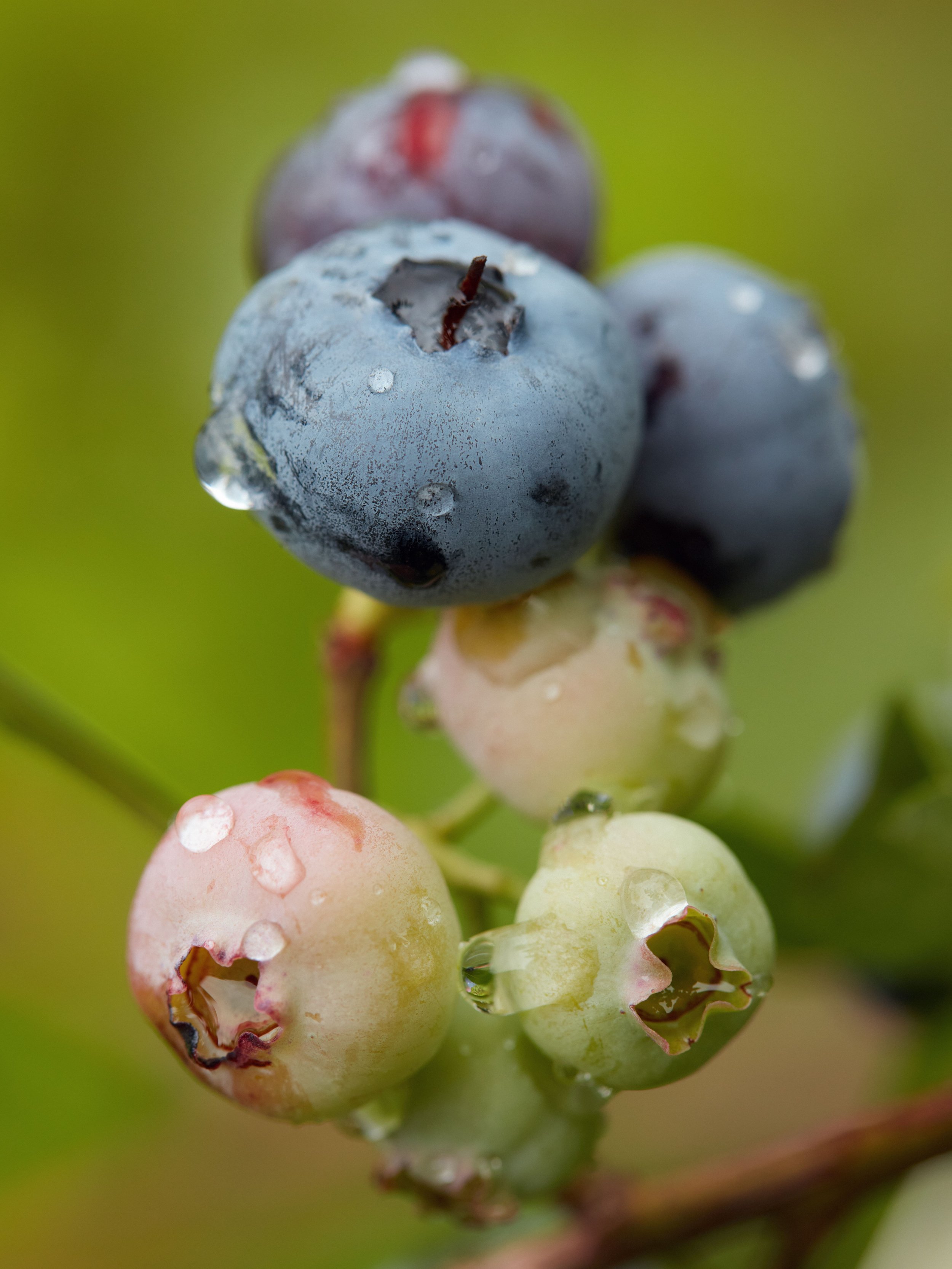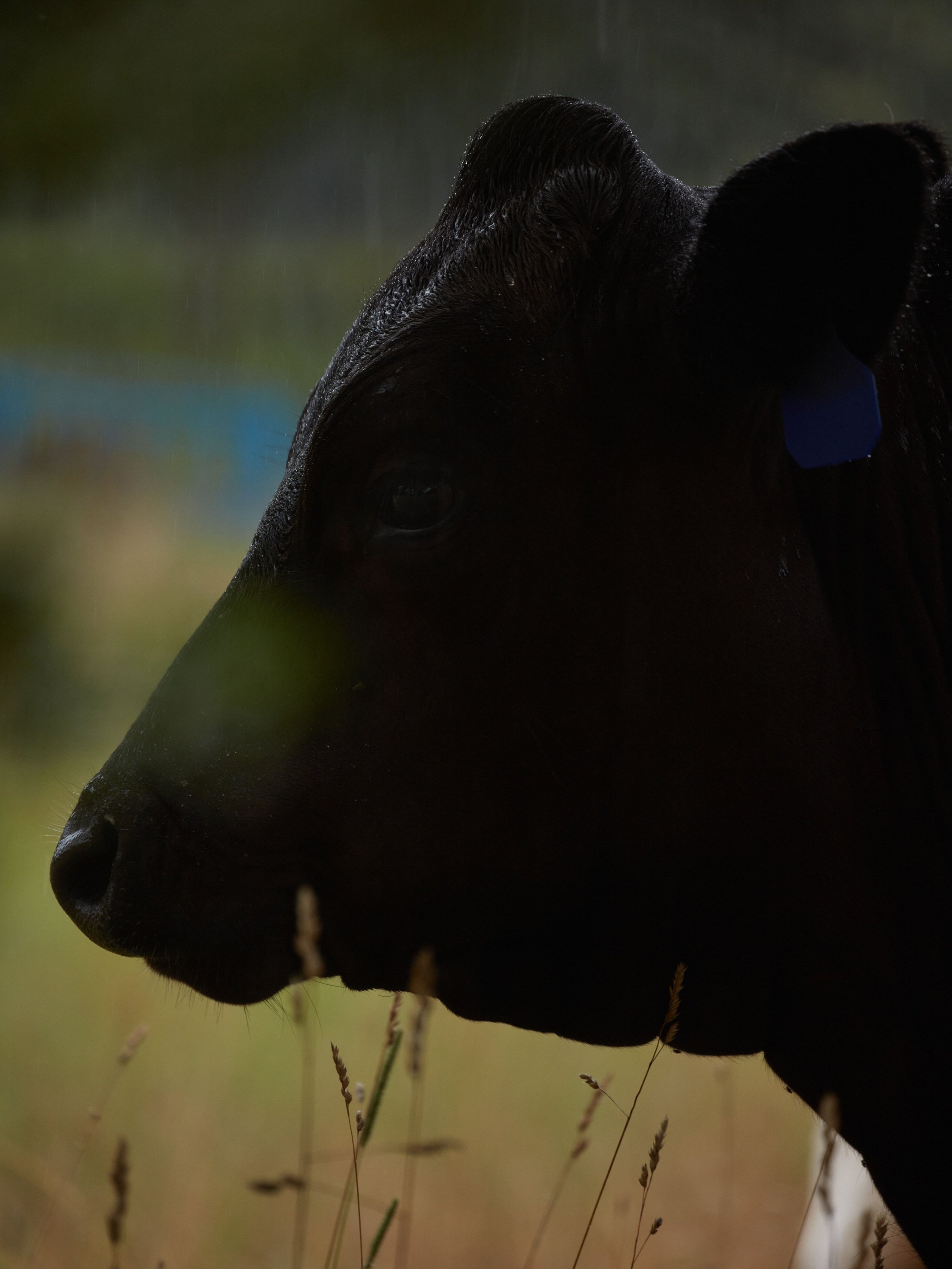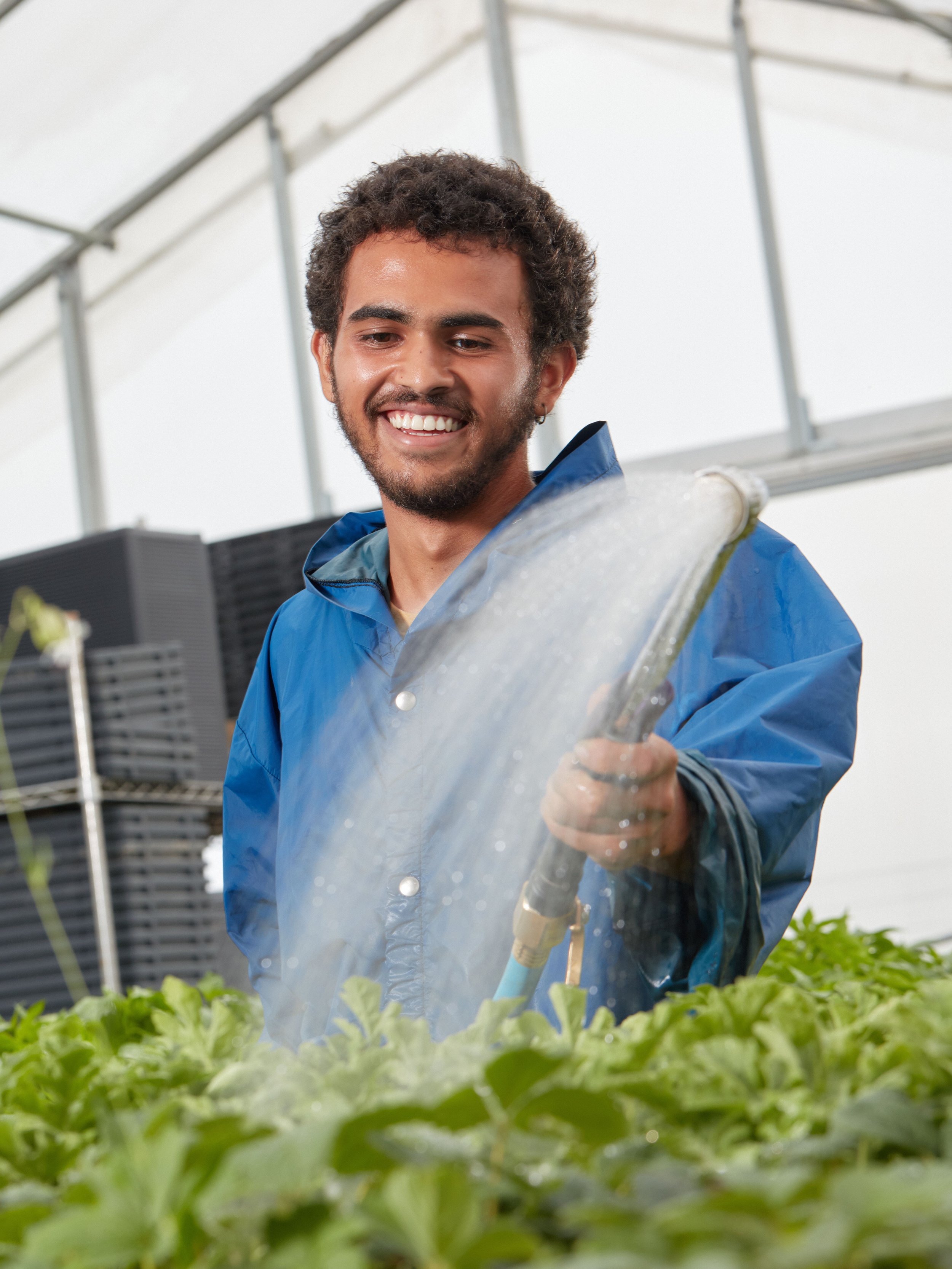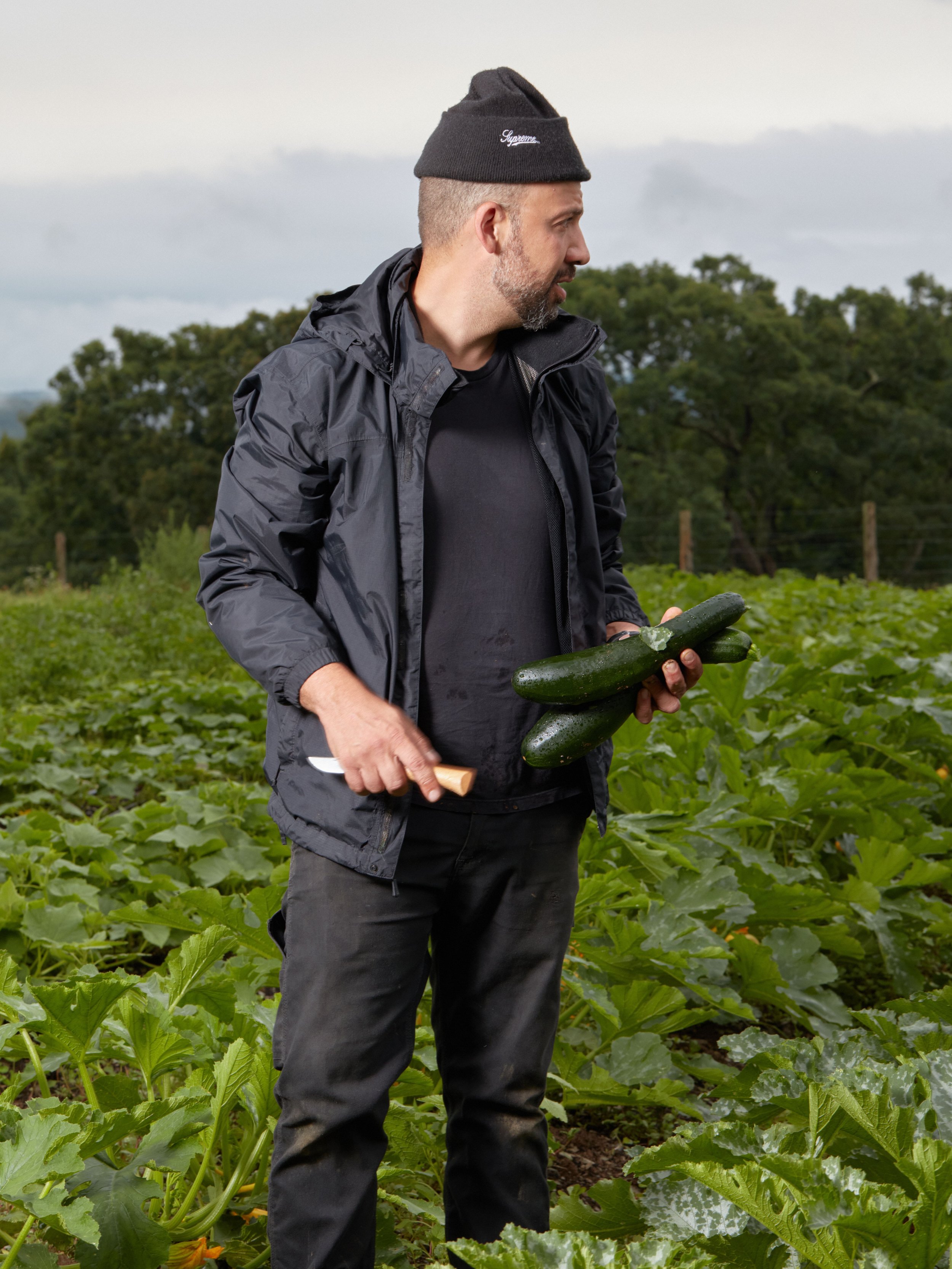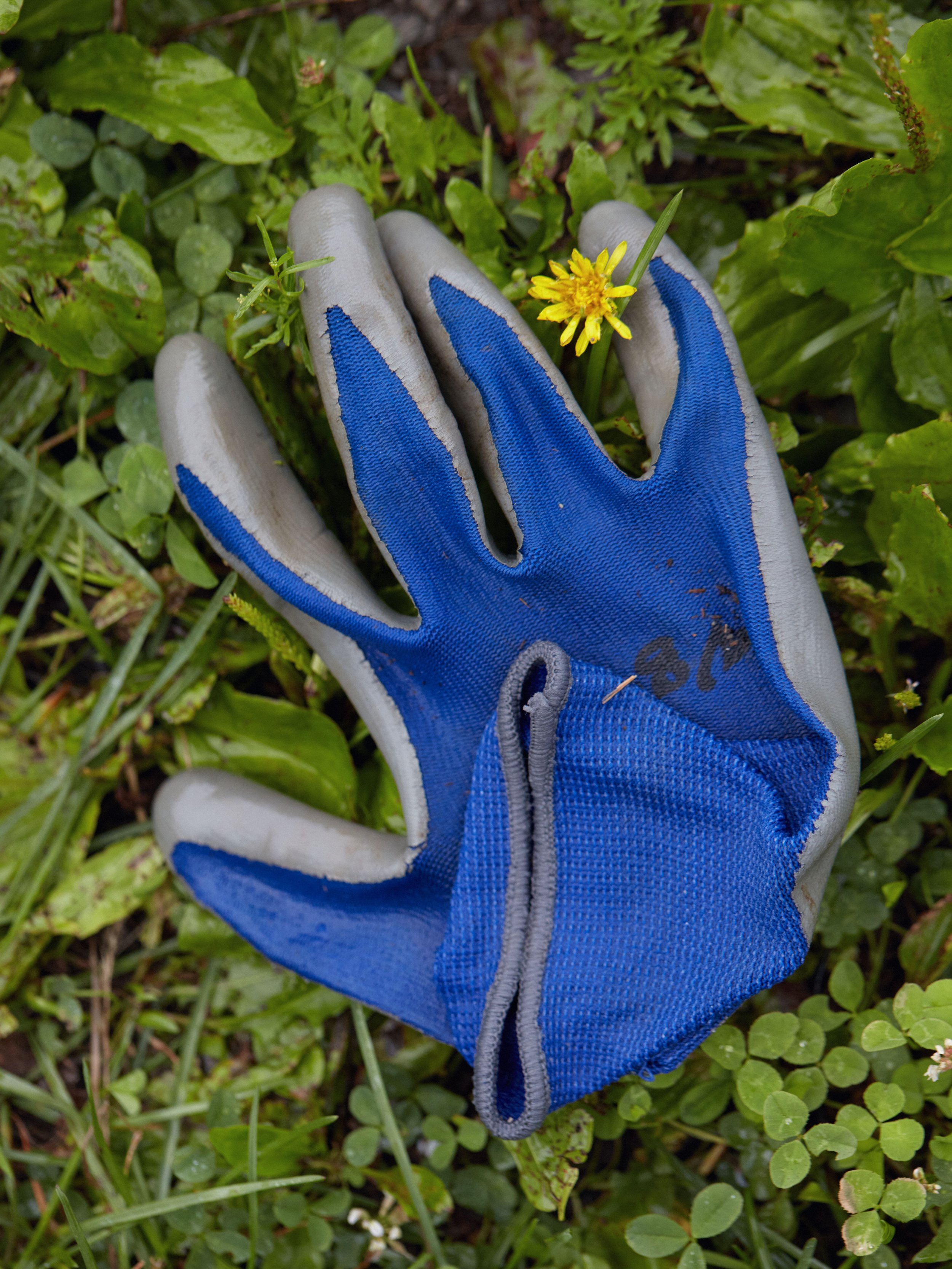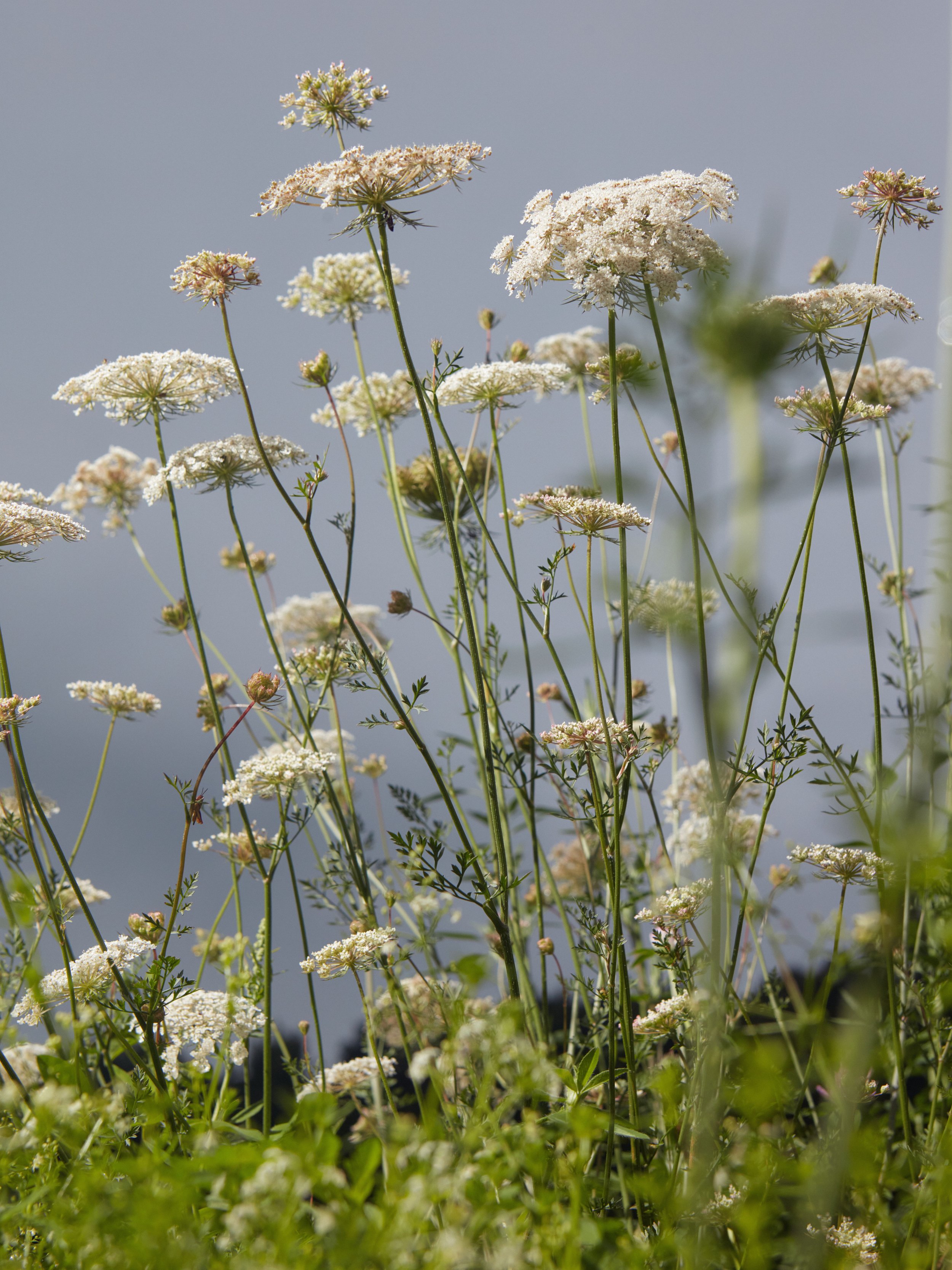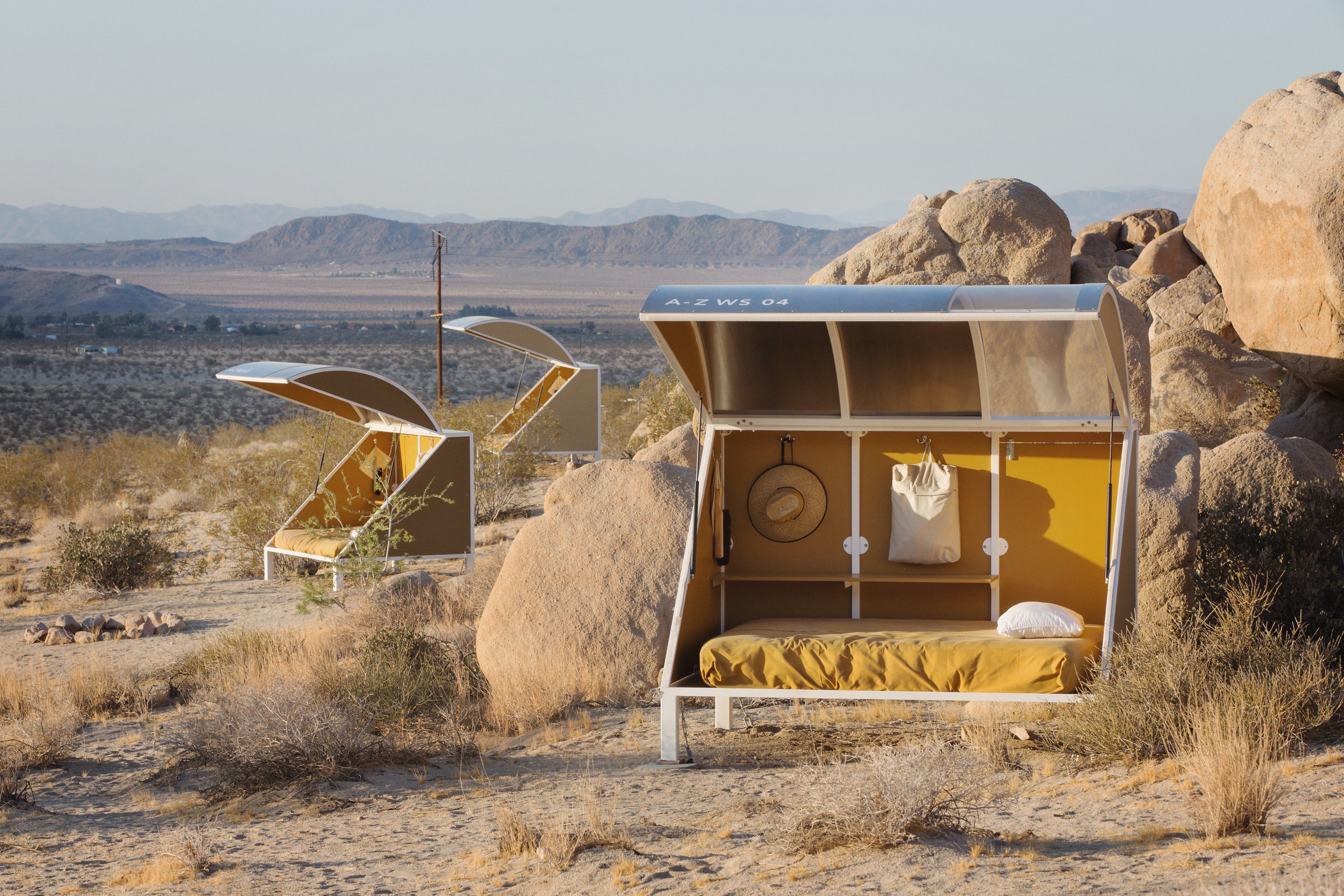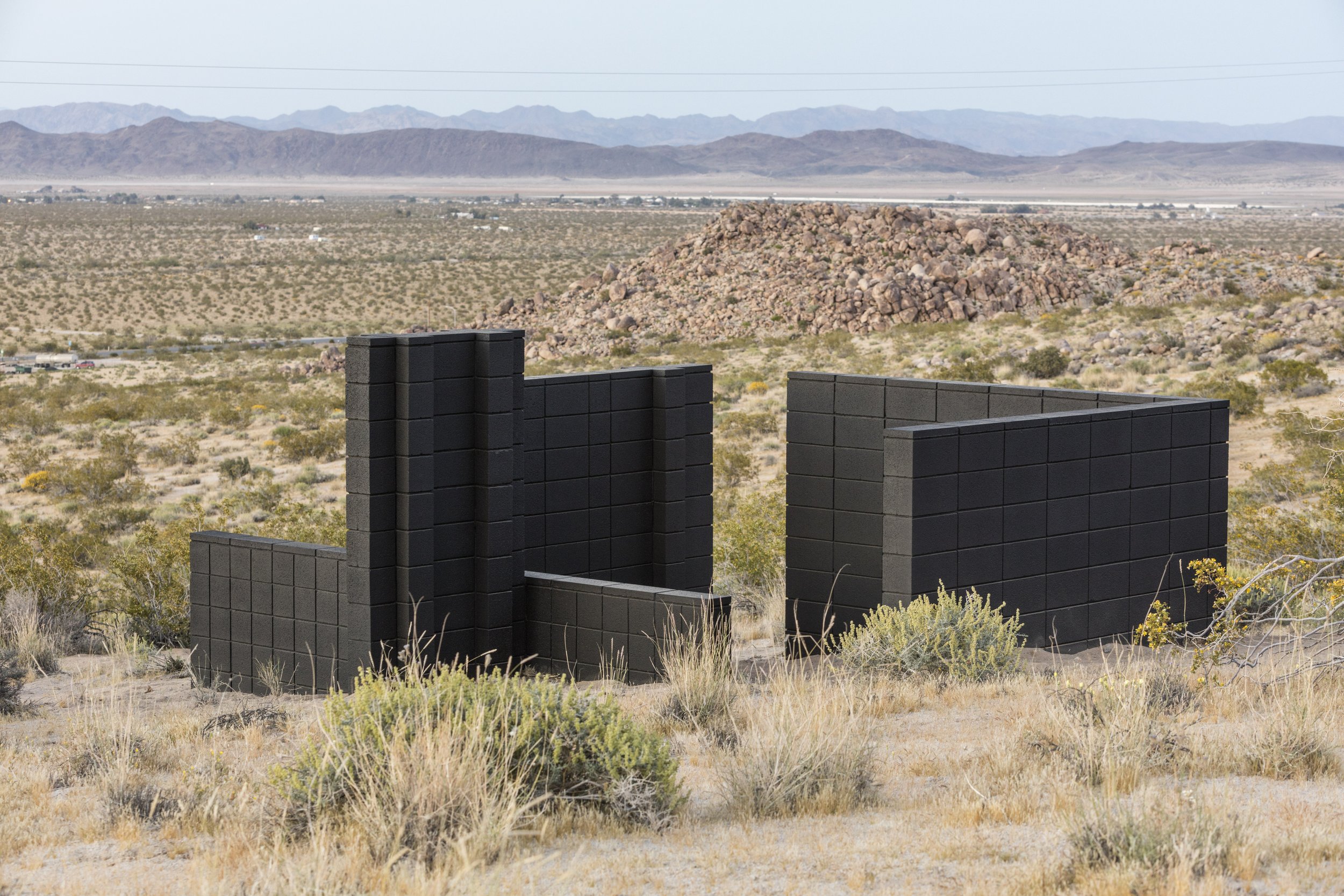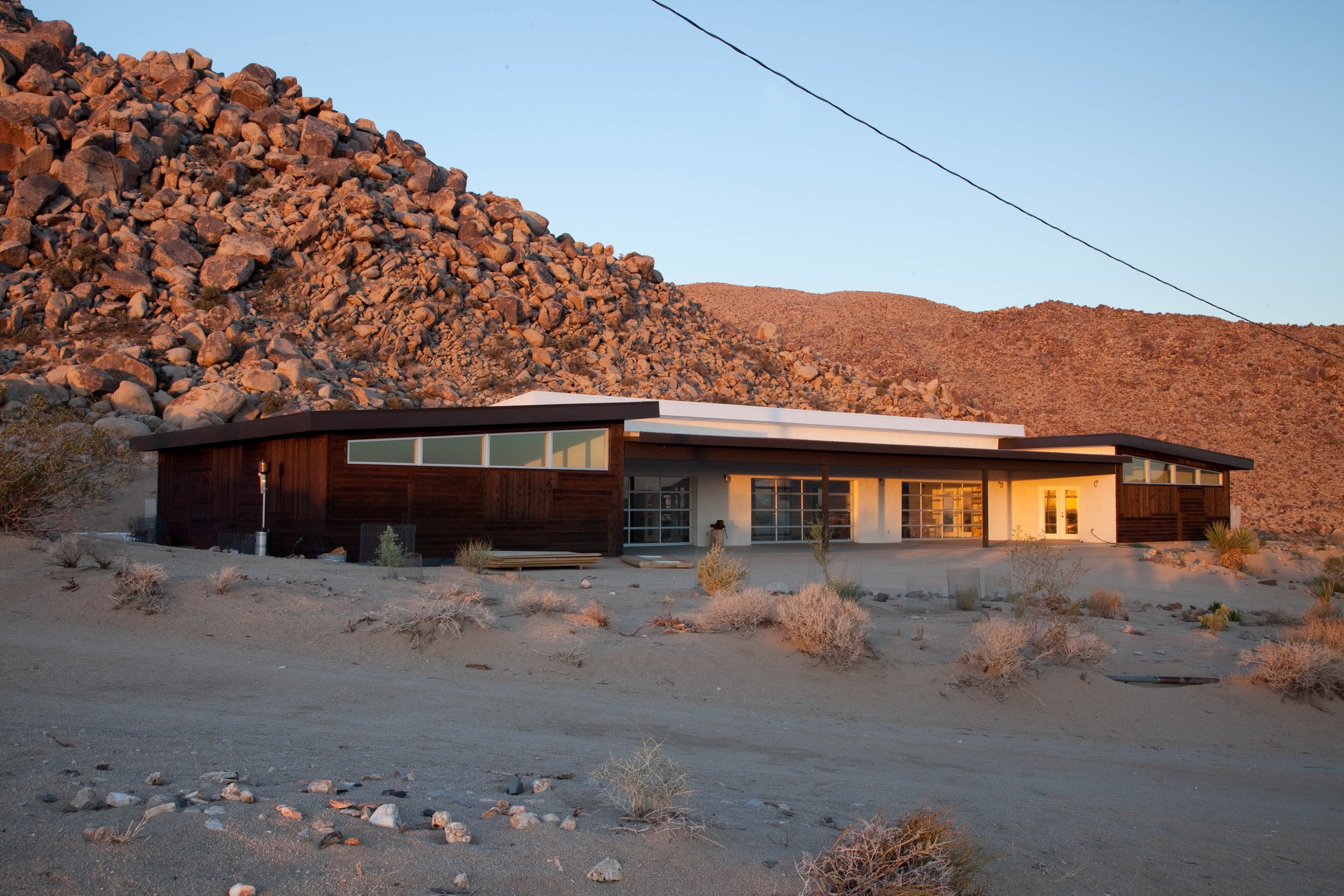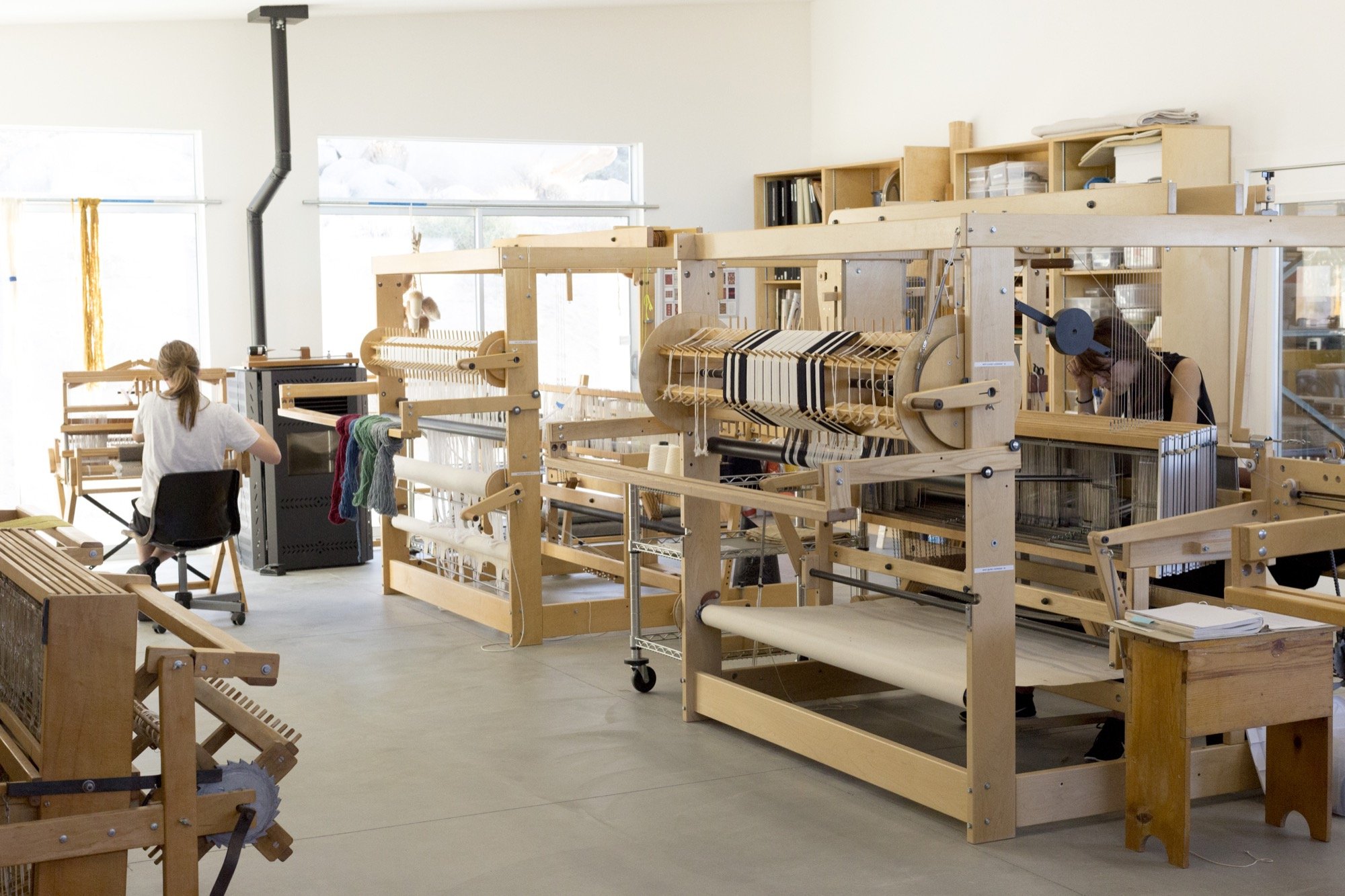text by Oliver Kupper
portraits by Parker Woods
Dozie Kanu’s practice is a conceptual exploration of colonial and hegemonic politics, architecture, spatial narratives, and so much more. Born in Houston, Texas in 1993, and now based in Santarém, Portugal, Kanu’s investigation of cultural artifacts belies an America still grappling with not only its troubled past, but also its troubled present. Razor-sharp, anti-climb, raptor spikes, a visual and physical deterrent for vandals and undesirables, find their way onto one of his sculptures modeled as a baby crib, an emblematic nod to the countless divisions that are psychologically embedded at birth. There is something alchemical about Kanu’s reimagined objects of our urban visual landscape, like an ATM blasted with a thick layer of black epoxy sculpting clay, or a poured concrete chair in “crack rock beige” that sits on a spoked tire rim, that gives Kanu’s work a kind of authentic reclamation of power in a grief-stricken zeitgeist. We caught up with Kanu on a rare visit to Los Angeles, before the opening of his exhibition, to prop and ignore, at Manual Arts, to discuss tools for building a more socially equitable world.
OLIVER KUPPER A lot of this issue that we’re doing is about biodiversity, but it’s also about offering new tools for existing in the world, which can be utilitarian, but also conceptual. Can you describe the tools you think can be used to navigate our post-pandemic future?
DOZIE KANU Anything that can be used to contribute towards getting to a desired end result or sense of understanding is what I would consider a tool. When I think about the world post-pandemic, or what post-pandemic even means, I’m thinking about the issues that were already present, but just became more apparent to a wider audience. We all learned during this pandemic, how fragile and skewed the economic structure of society is and also how the system of objects that we interact with every day have made it difficult for people to differentiate between what’s necessary and what’s desired in their lives. It was disappointing to see how our government handled the distribution of stimulus, but it was also disappointing to feel the desperation from people who needed it. Particularly when I think about Black people, the idea of relying on aid in times of crisis from a government that failed to acknowledge you as being human from its inception—it just felt like being in the same boat. So, when I think about what tools I’m using to continue life post-pandemic, I’m thinking about self-governance a lot, and I’m thinking about a scaled back way of living that prioritizes stability and sustainability.
Healthy Minds Must Grow, Watch From The Bleachers, 2020
found ox-drawn plough, pine wood, steel, found Dries van Noten hoodie and colour pencil
Courtesy the artist and Project Native Informant, London
KUPPER Like community governance.
KANU Yeah, but that community can actually exist online. I’m talking more about trying to have much more control of your own living situation—stripping things down. I’m thinking about Andrea Zittel’s set up in Joshua Tree. Or like my warehouse situation in Portugal. Everything’s local. The market where I get food comes from farmers in the area, and it’s fairly low cost. Everything feels homegrown. I’m learning a little about agriculture. We got solar panels. I know it’s not true, but it often feels as though I live separate from any kind of government intervention. I guess I was chasing that feeling. That’s not to say people should give up trying to save the burning empire, but I just think maybe they should prioritize restructuring their relationship to that empire. The famous Samuel Johnson quote that always comes back to me: “Patriotism is the last refuge of a scoundrel”, which has been interpreted in many ways, but I take it as a refusal to expect your government to represent you better than you can represent yourself. Like, people really be pledging allegiance to a flag.
KUPPER Your work often exists in this realm between functional object and sculpture. And that’s really changed and evolved in the last few years. How would you describe the evolution of your work?
KANU When I first started making objects, I was definitely more apprehensive to thinking about them in a sculptural sense. I guess I didn’t have the language to fully see it that way. My parents are also immigrants, so there was always this kind of practicality in everything that we did that was instilled in me. I was making design objects essentially, but a lot of the ideas that I was trying to infuse into these works were being pulled from far outside of just the simple function of the object.
Mainly chairs, tables, stools, shelves—things like that, but with a heavy poetic and conceptual discipline about them. Sometimes the gallery that I was working with would come to me and ask me if I could make a custom edition of one of my works for a client—make this in a different color or make this in a different size to fit in this client’s foyer. It was feeling like people weren’t looking at the work. As time went on, I stopped being a little bitch about it and was just like, Nah—I understand that in order for this work to be seen in its entirety, it needs to exist within the context of art in some way. I had to give myself permission to create a different context. My recent work has become even less preoccupied with designating a specific function but I think even with my more “design object” type work, I feel it still requires the same lens or sensibilities that are applied when looking at sculpture—trying to obscure the hierarchies but not just for the sake of obscuring hierarchies, which is what I see a lot in contemporary design right now.
KUPPER Can you talk about the deeper significance in regard to race and class when sourcing found material and the histories of the materials that you use in your work?
KANU I would say that the found elements in my work give each piece a sense of place for me. The country, the city, the region—it brings a sense of geography to the work. It implements the stories of the people from that geography. It’s a way to elevate the labor of others and point to specific industries. I naturally gravitate toward symbols of past memories or ways of communicating something that maybe I don’t have the words for. Whether it be the composition of the object, or the shapes that are present on it, it’s trying to get closer to the complexity of where I’m at.
Bhad (Their Newborn’s Crib), 2019
steel pipes, anti-climb scaling spikes
114 × 58 × 99 cm
Courtesy the artist and 180 The Strand, London
KUPPER Sort of like an untranslatable language.
KANU Yes, I would say so. Soul spillage. A lot just comes very intuitively. It’s like second nature to reference things that I saw and experienced growing up. In Houston, when you would see 84s or 83s on a slab, there was an understanding that whoever was driving that car was expressing a kind of push back against the authorities and trying to assert value in themselves. It wasn’t always the case, but I usually assume most of them wasn’t working 9 to 5 jobs. As a kid it definitely influences you to want to live freely like that. The Bench on 84s work from 2017 is emblematic of that energy. And I sort of pushed back against the grain in a different way—in a way that was even further outside of what was expected of me.
Chair [ iii ] (Crack Rock Beige), 2018
poured concrete, steel, rims
94 × 48 × 42 cm
Courtesy the artist
KUPPER It seems like that piece set a template.
KANU Yes. For me it was communicating correctly. It could exist in a lot of different conversations, which I still feel strongly about.
KUPPER I read that you spent most of your childhood trying to ignore your Nigerian roots. And you finally visited. What did you learn about your practice after you visited Nigeria?
KANU I learned that I'm an Igbo soul through and through. As much as I tried to bury it, it’s fully in there. When I look at the work that I’m making now, then I think about what I was seeing in Nigeria, the culture has definitely influenced me. It’s the way I was raised—finding resources and trying to maximize everything that you have readily available to you. I feel more connected to my parents, my roots, and I want to continue pulling from that, making that a richer aspect of who I am.
KUPPER Your parents never took you to Nigeria growing up?
KANU Nah, I had never been. I guess it just never aligned with their work schedule, or they didn’t have the financial means to take me and my brothers home. They called it ‘home’, which I found kind of funny when I was younger. In my mind I’m like, I’m already home! But to them Nigeria was home and they wanted me to see it that way too. But I started making a little money a couple years ago and I just took the initiative to go ahead and see what it’s like. I took my mom with me.
KUPPER That must’ve been amazing.
KANU Yes, and it was necessary. It was great timing also because I had just moved to Portugal and I was about to really embrace the idea of living in isolation. I needed to visit Nigeria to give myself that extra layer of understanding my background. I needed to see my people up close. I needed to walk those streets.
KUPPER Did you see family?
KANU Yeah, it was weird. Relatives that I had never met before recognized me. My parents both grew up in small villages and it’s not very common for people to migrate to America. My mom made it out of her village and my dad made it out of his village and so they’re kind of seen and talked about as the blessed ones that were able to find a way out. That’s what most people in these villages aspire towards. So, people recognized who I was just based on them knowing everything about the ones that found a way out.
KUPPER You were talking before about how the pandemic has really cracked open these sorts of divides in the wealth gap and made the economic disparity a lot more visible. How do you think your current work or the work you’ve been making during the pandemic is reflecting this need for change?
KANU I don’t think it’s affected my work so much. I have always tried to keep a democratic spirit in the work—understanding that the art world is inherently elitist. But during the pandemic I settled on the idea that I was addressing myself with each work. I’m speaking directly to myself—past, present and future—with heavy emphasis on my adolescent self. Moving forward, I think knowing this will keep me grounded so I don’t stray too far away from the emancipatory qualities that I hope can be located in the work. I’m basically just trying to have more potent, more complicated, more authentic conversations with myself in hopes that it resonates elsewhere and contributes to a much larger conversation.
At The Moment, 2021
Found ATM machine, epoxy sculpting clay, steel, MDF
56 x 46 x 22 inches
Courtesy the artist and Manual Arts
KUPPER I think your commitment to authenticity demonstrates a certain level of hope.
KANU Word, I think hope is one of the most important elements of what artists provide. You’re supposed to provide pathways for others to walk towards being more honest with themselves. All of my favorite artists are people that create the tools for me to truly be myself and to see myself.
Originally published as a cover story in Autre’s Biodiversity Issue, FW 2021






